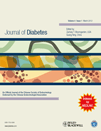Effects of cationic hydroxyethyl cellulose on glucose metabolism and obesity in a diet-induced obesity mouse model
Abstract
Background: To investigate the effect of a new soluble fiber, namely cationic hydroxyethyl cellulose (cHEC), on weight loss and metabolic disorders associated with obesity using a high-fat diet-induced obese mouse model.
Methods: Obese male C57BL/6J (B6) mice were fed high-fat (60% kcal) diets supplemented with cHEC for 5 weeks. Body weight, energy intake, mesenteric adipose and liver weights, plasma cholesterol, plasma insulin, glucose, adiponectin, and leptin were assessed to determine the effects of cHEC. Hepatic and fecal lipids were also analyzed to investigate the effect of cHEC on lipid absorption and metabolism.
Results: Supplementation of the high-fat diet with cHEC resulted in significant weight loss in obese mice. In addition, significant decreases were seen in mesenteric adipose and liver weights, as well as concentrations of plasma cholesterol and hepatic lipids. A significant improvement in glucose homeostasis, insulin sensitivity, and leptin concentrations were observed at 4% cHEC. Moreover, increases in fecal excretion of total bile acids, sterols, and fats indicated altered fat absorption when cHEC was supplemented in the diet.
Conclusions: We have shown in the present study that cHEC reduces body weight, improves insulin sensitivity, and prevents the development of metabolic syndrome. Furthermore, the effects of cHEC on glucose and lipid homeostasis in B6 mice are mediated by improvements in leptin sensitivity resulting from reduced fat absorption.




